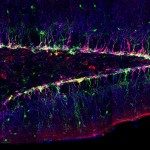Link to Pubmed [PMID] – 17643981
Curr. Opin. Genet. Dev. 2007 Aug;17(4):351-8
Left/right (L/R) asymmetry is essential during embryonic development for organ positioning, looping and handed morphogenesis. A major goal in the field is to understand how embryos initially determine their left and right hand sides, a process known as symmetry breaking. A number of recent studies on several vertebrate and invertebrate model organisms have provided a more complex view on how L/R asymmetry is established, revealing an apparent partition between deuterostomes and protostomes. In deuterostomes, nodal cilia represent a conserved symmetry-breaking process; nevertheless, growing evidence shows the existence of pre-cilia L/R asymmetries involving active ion flows. In protostomes like snails and Drosophila, symmetry breaking relies on different mechanisms, involving, in particular, the actin cytoskeleton and associated molecular motors.

